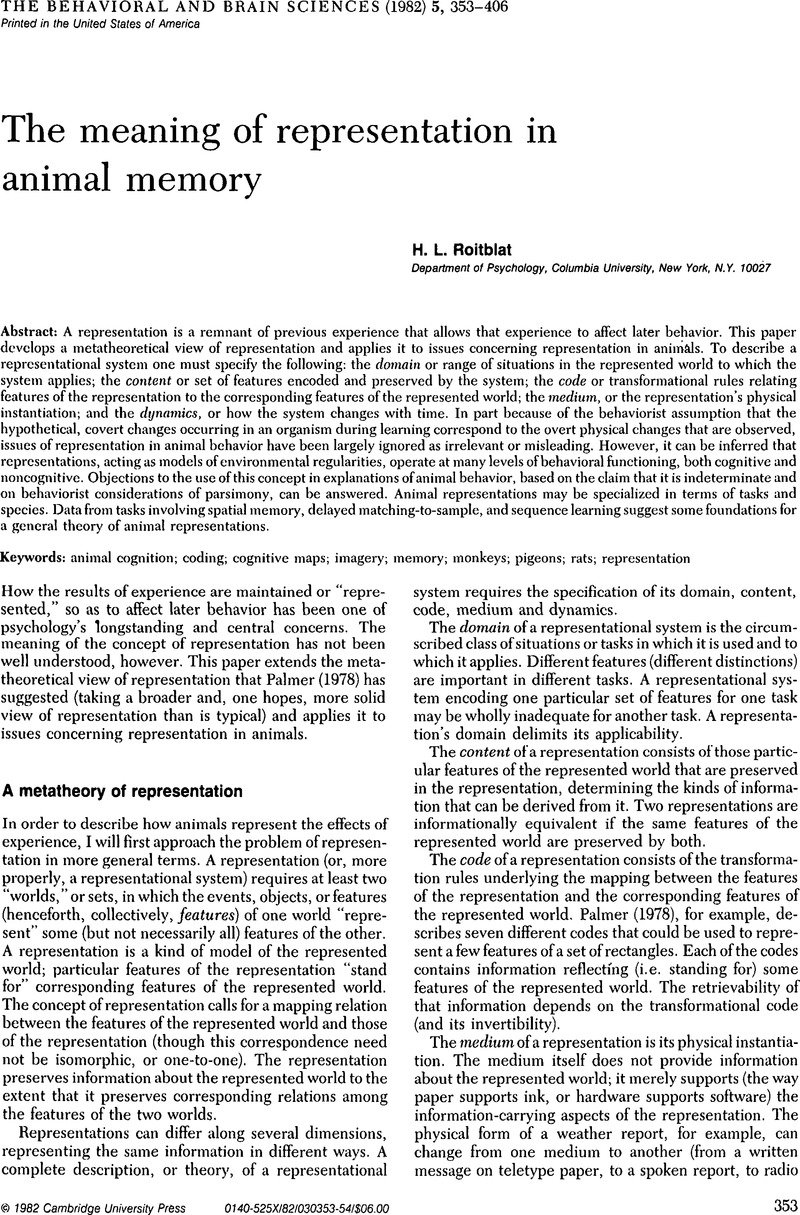Crossref Citations
This article has been cited by the following publications. This list is generated based on data provided by Crossref.
Schusterman, Ronald J.
and
Krieger, Kathy
1984.
California Sea Lions Are Capable of Semantic Comprehension.
The Psychological Record,
Vol. 34,
Issue. 1,
p.
3.
Natelson, Benjamin H.
1986.
The reflex remains.
Behavioral and Brain Sciences,
Vol. 9,
Issue. 2,
p.
299.
Sokolov, E. N.
1986.
Vascular components of the orienting and defensive reflexes.
Behavioral and Brain Sciences,
Vol. 9,
Issue. 2,
p.
304.
Wurster, Robert D.
1986.
Program control of circulatory behavior.
Behavioral and Brain Sciences,
Vol. 9,
Issue. 2,
p.
305.
Roberts, Larry E.
1986.
Evidence for instrumental plasticity in the cardiovascular system is circumstantial.
Behavioral and Brain Sciences,
Vol. 9,
Issue. 2,
p.
301.
Engel, Bernard T.
1986.
An essay on the circulation as behavior.
Behavioral and Brain Sciences,
Vol. 9,
Issue. 2,
p.
285.
Wolf, Stewart
1986.
Circulatory behavior: Historical perspective and projections for the future.
Behavioral and Brain Sciences,
Vol. 9,
Issue. 2,
p.
304.
Brener, Jasper
1986.
The circulation, behavior, and striate muscular activity.
Behavioral and Brain Sciences,
Vol. 9,
Issue. 2,
p.
296.
Roitblat, H. L.
1986.
On the circulation as cognition.
Behavioral and Brain Sciences,
Vol. 9,
Issue. 2,
p.
302.
Bo, Alberto Del
and
Zanchetti, Alberto
1986.
Central command and reflex regulation: Cardiovascular patterns during behavior.
Behavioral and Brain Sciences,
Vol. 9,
Issue. 2,
p.
297.
Sandman, Curt A.
1986.
Circulation as consciousness.
Behavioral and Brain Sciences,
Vol. 9,
Issue. 2,
p.
302.
Žemaitytė, Danguole M.
1986.
Conditionality of heart rate responses in healthy subjects and patients with ischemic heart disease.
Behavioral and Brain Sciences,
Vol. 9,
Issue. 2,
p.
306.
Engel, Bernard T.
1986.
If it looks like a duck, walks like a duck, and quacks like a duck, it is a duck: Neurally mediated responses of the circulation are behavior.
Behavioral and Brain Sciences,
Vol. 9,
Issue. 2,
p.
307.
Corley, Karl C.
1986.
Extension of proposed concepts of cardiovascular behavior from normal to abnormal function.
Behavioral and Brain Sciences,
Vol. 9,
Issue. 2,
p.
297.
Jennings, J. Richard
1986.
Is circulation a conditional operant or has a behaviorist discovered cognitive structures?.
Behavioral and Brain Sciences,
Vol. 9,
Issue. 2,
p.
298.
Yellin, Absalom M.
1986.
Control of autonomic nervous system-mediated behaviors: exploring the limits.
Behavioral and Brain Sciences,
Vol. 9,
Issue. 2,
p.
305.
Meehan, John P.
1986.
Cardiovascular adjustments are a part of behavior.
Behavioral and Brain Sciences,
Vol. 9,
Issue. 2,
p.
299.
Bergel, D. H.
1986.
Cardiovascular behaviour: Where does it take us?.
Behavioral and Brain Sciences,
Vol. 9,
Issue. 2,
p.
295.
Billman, George E.
1986.
Behavioral stress and myocardial ischemia: An example of conditional response modification.
Behavioral and Brain Sciences,
Vol. 9,
Issue. 2,
p.
295.



